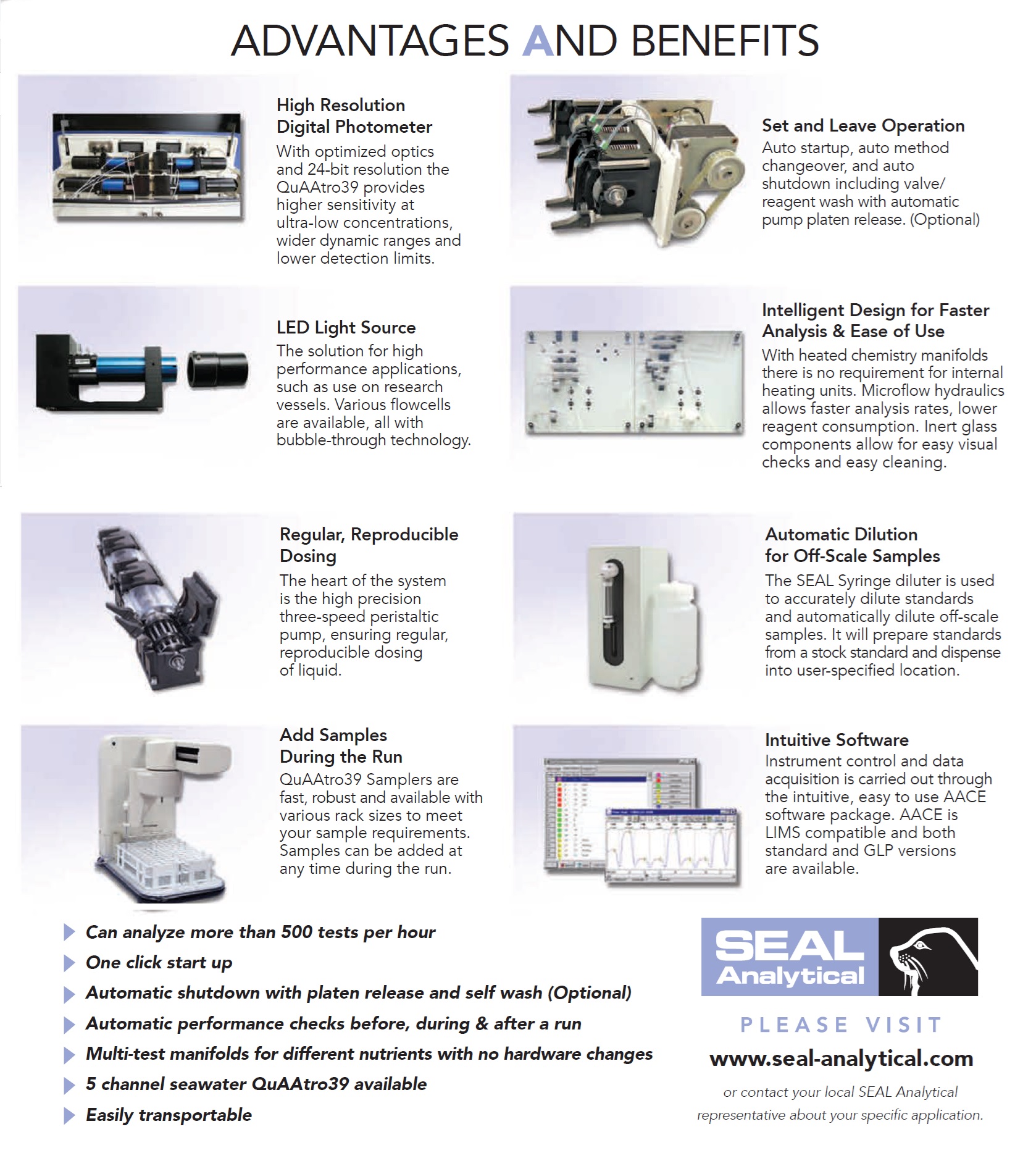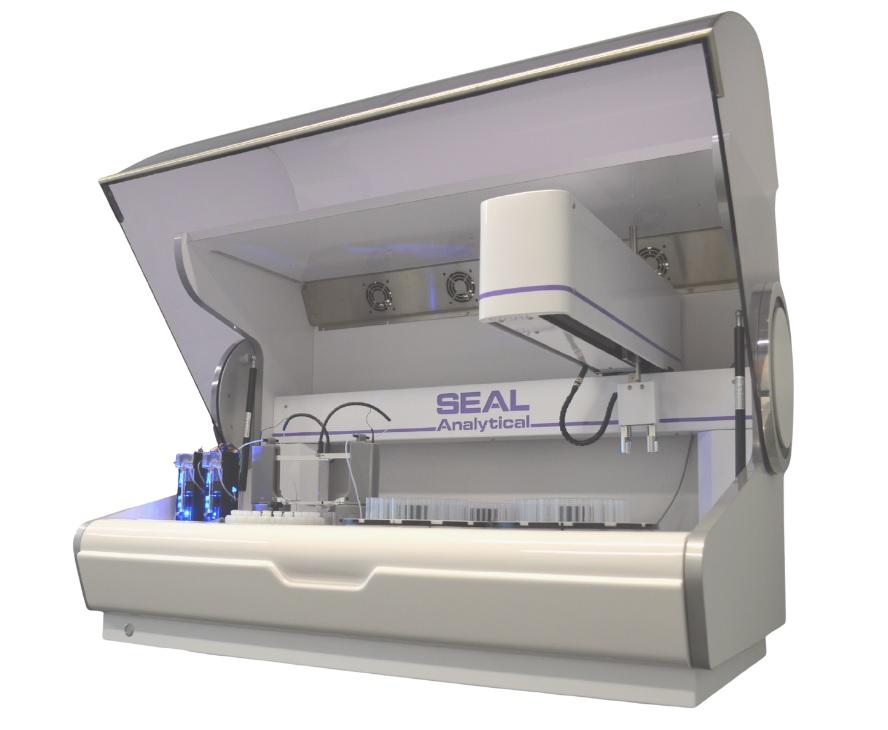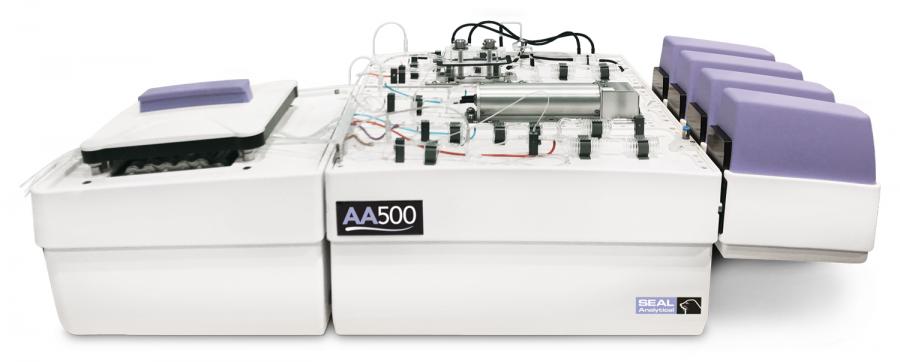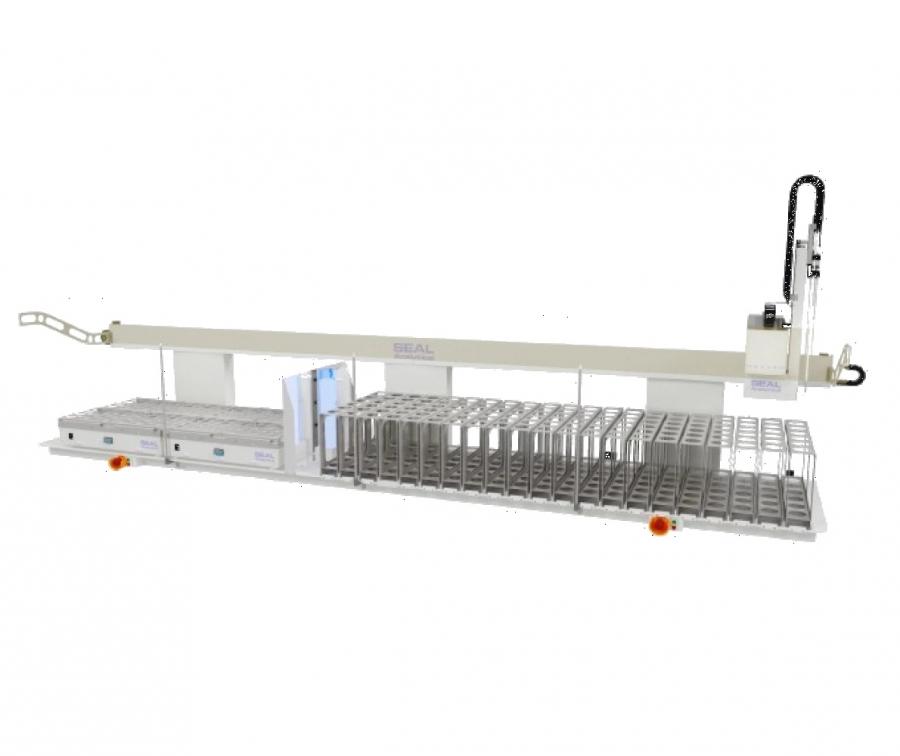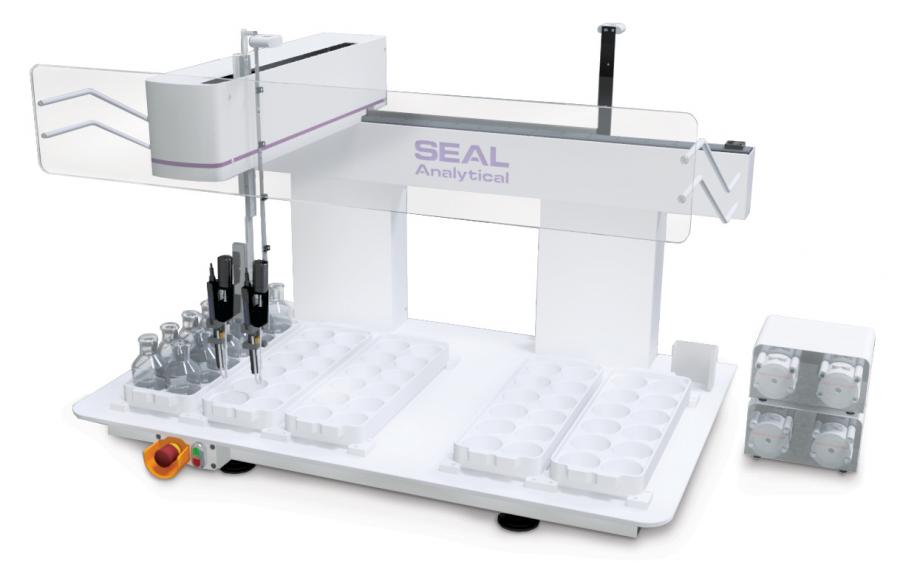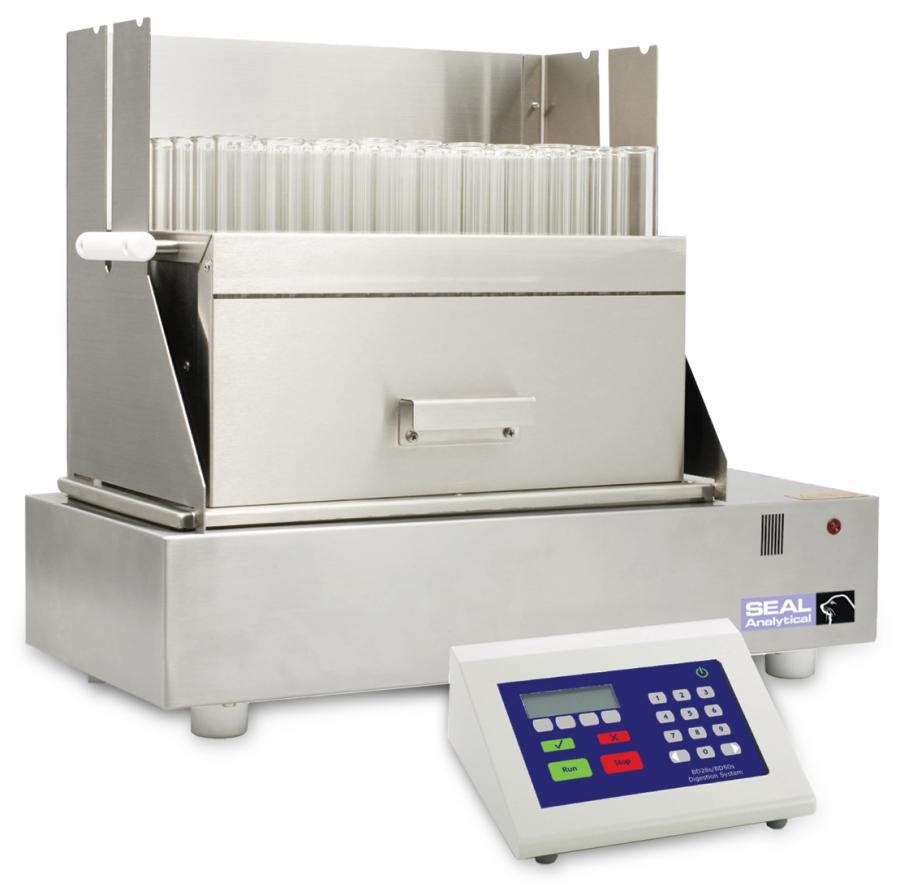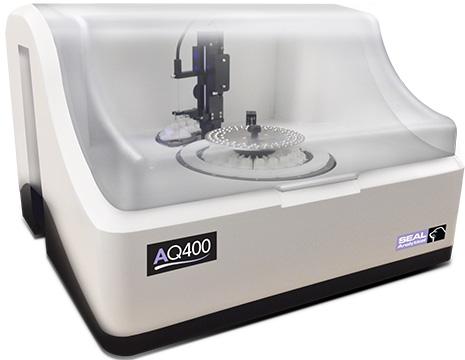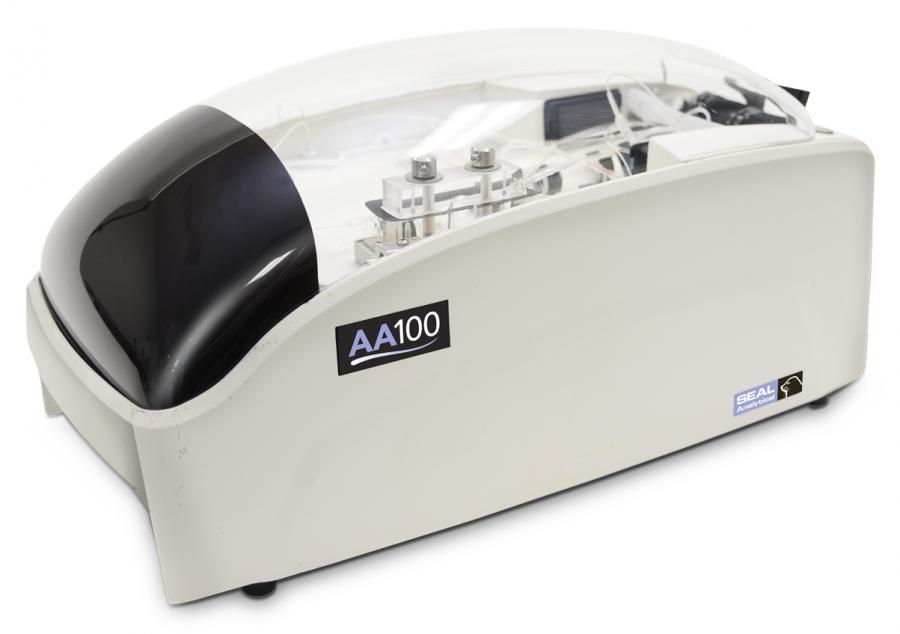E-Catalog > SEAL Analytical > QuAAtro39 AutoAnalyzer
Product Information :
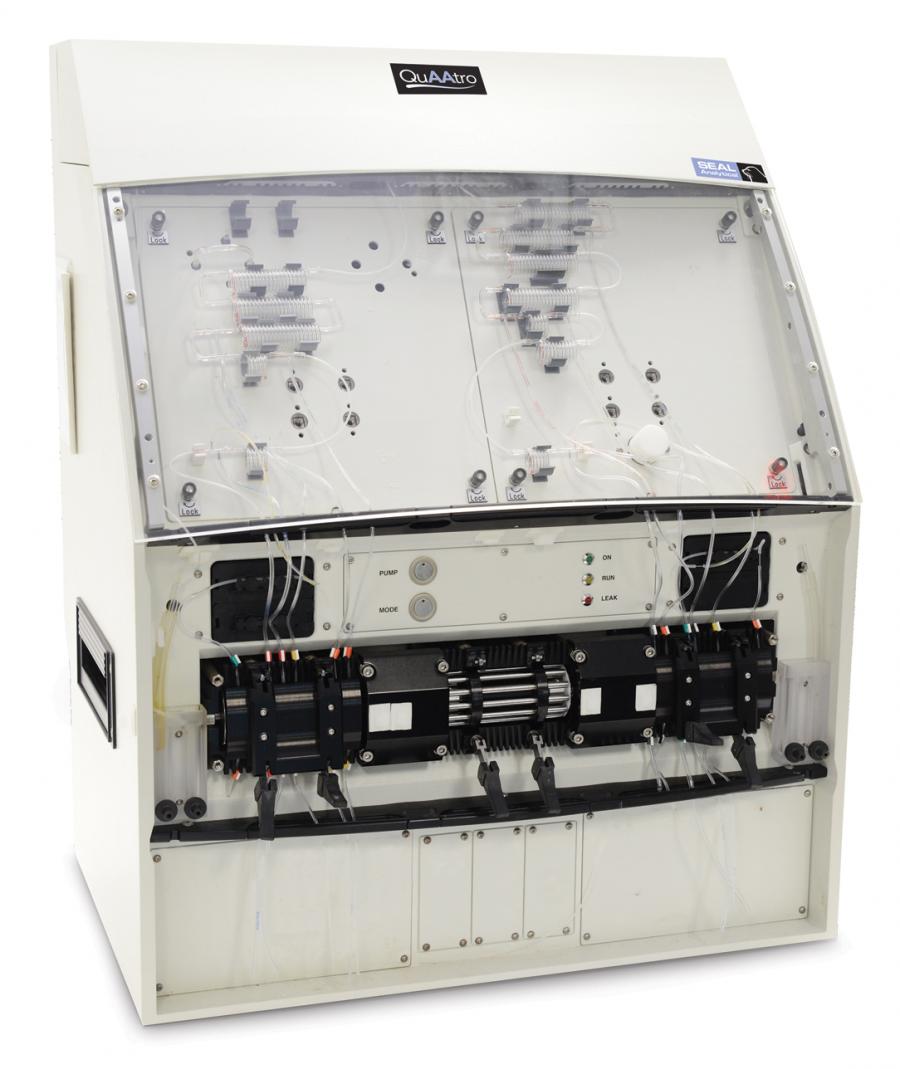
- เครื่องมือวิทยาศาสตร์ / สารเคมีและวัสดุภัณฑ์สำหรับห้องปฏิบัติการ
- SEAL Analytical
- สินค้า, ผลิตภัณฑ์

Product Detail :
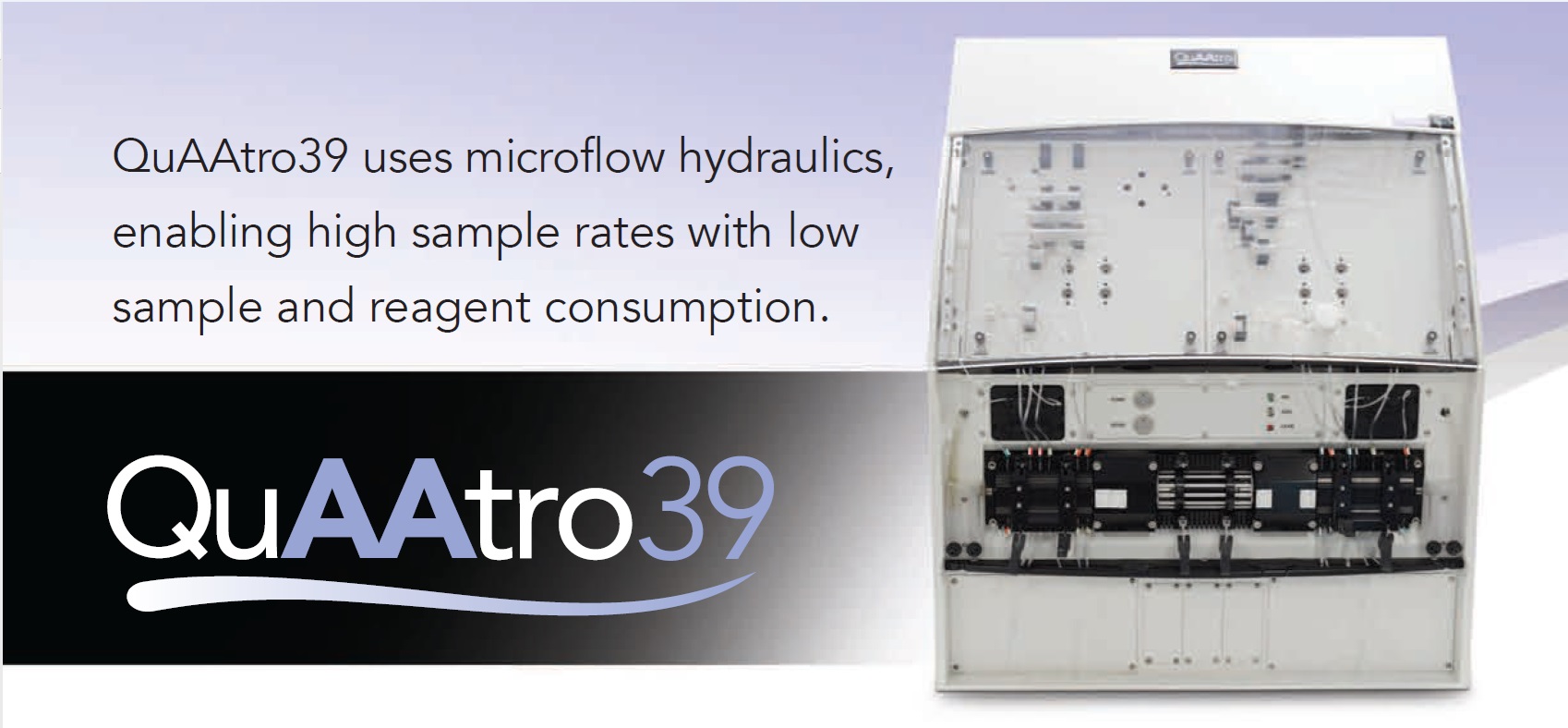
HOWDOES THE QU TRO39WORK?
The QuAAtro39 is the very latest generation of the original world-class Technicon Segmented Flow Analysis (SFA) systems. QuAAtro39 is now even more flexible with 33% more capacity, further improving your laboratory efficiency.
A basic SFA system consists of an autosampler, a peristaltic pump, a chemistry manifold, a detector and data acquisition software. Sample and reagents are pumped continuously through the chemistry manifold. Air bubbles are introduced
at regular intervals forming unique reaction segments which are mixed using glass coils. Glass is ideal, as it is inert, stays clean and enables easy visual checks.
In SFA, reactions run to completion and the ratio of sample to reagents in the detector reaches a constant maximum value. This results in ultra-low detection limits and exceptional reproducibility. Variations in reaction time, temperature and sample matrix do not affect the results as they do in other colorimetric techniques, such as flow injection analysis, where the reaction is not brought to completion.
QuAAtro39 is a microflow SFA system, the internal diameter of all glassware being 1mm. This reduces reagent consumption and increases throughput, with most methods running at 100 - 120 samples hour.
The integrated enclosed manifold and detector are heated to 37° C. Flow stability is ensured as the optimal bubble frequency for each method is programmed by silent air valves.
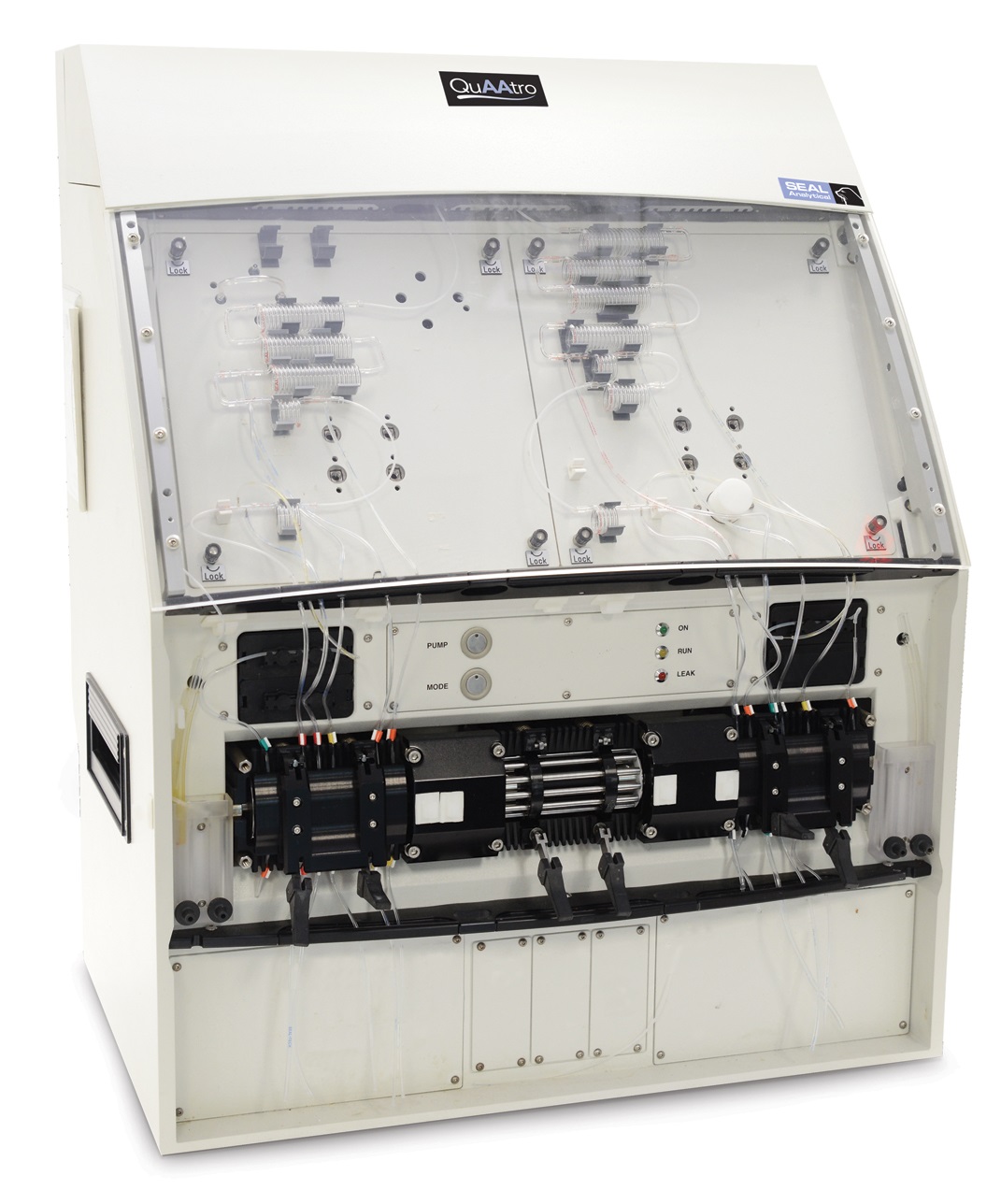
Why Choose the QuAAtro39 AutoAnalyzer?
- Generate more than 500 tests per hour.
- Ultra-low detection limits.
- High reproducibility.
- Increases productivity by 33% over its predecessor.
- Micro or macroflow hydraulics enable high sample rates (internal diameter of glassware is 1 or 2mm).
- Low sample consumption
- Low reagent consumption
- One-click start up.
- Automatic performance checks, before, during and after a run.
- Automatic monitoring of noise, drift, bubble pattern and light energy
- Automatic and complete shutdown with automatic pump platen release (option)
- 5+ simultaneous chemistries from one console.
- Also available as a 5 channel seawater analyzer.
- High-resolution digital photometer provides higher sensitivity.
- LED light source.
- Integrated enclosed manifold and detector (heated to 37 + degrees C)
- Optimal bubble frequency programmed by silent air valves.
- Reliable unattended operation & overnight running.
- Multitest manifolds for different nutrients with no hardware changes.
- Glass components for easy cleaning & easy visual checks.
- Uses Continuous Segmented Flow Analyzer principles to reduce inter-sample dispersion.
- Compact and flexible chemistry analyzer.
- Easy to transport.
QuAAtro Methods
SEAL Analytical has more than 1,000 documented Continuous Flow Analyzer methods, with new applications regularly being developed in our laboratories. USEPA, ASTM, ISO, AOAC, DIN and other international regulatory compliant methods available.
How Does the QuAAtro39 AutoAnalyzer Work?
The QuAAtro39 AutoAnalyzer is the very latest generation of the original world-class Technicon Continuous Segmented Flow Analyzer (SFA). QuAAtro39 AutoAnalyzer is now even more flexible and with 33% more capacity over its predecessor, further improving laboratory efficiency.
A basic Continuous Segmented Flow Analyzer consists of an AutoSampler, a peristaltic pump, a chemistry manifold, a detector and data acquisition software. Samples and reagents are pumped continuously through the chemistry manifold. Air bubbles are introduced at regular intervals forming unique reaction segments, which are mixed using glass coils. Glass is ideal, as it is inert, stays clean and enables easy visual checks.
In Continuous Segmented Flow Analyzers reactions run to completion, and the ratio of sample to reagents in the detector reaches a constant maximum value. This results in ultra-low detection limits and exceptional reproducibility. Variations in reaction time, temperature, and sample matrix do not affect the results as they do in other colorimetric techniques, such as Flow Injection Analysis, where the reaction is not brought to completion.

